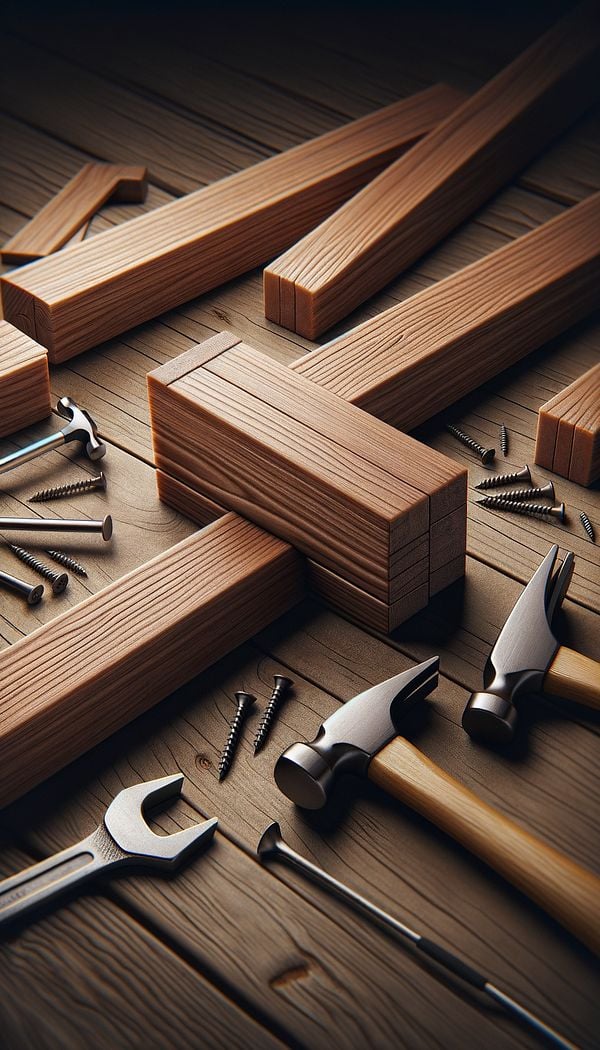What is a Butt Joint?
A butt joint is a simple method of joining two pieces of material by simply butting them together.
Description
A butt joint, in the context of interior design, refers to the most basic method of connecting two pieces of material, such as wood, metal, or plastic. It is achieved by placing the end of one piece against the length or end of another piece, with the two surfaces in direct contact with each other. The simplicity of this joint makes it one of the most commonly used techniques in construction and furniture making. Despite its simplicity, the strength of a butt joint can vary significantly depending on the materials being joined, the method of joining (such as screws, nails, glue, or welding), and the direction of the force applied to the joint.
In interior design, butt joints are often used for their aesthetic appeal, offering a clean and minimalist look. They are especially prevalent in modern and contemporary furniture design where simplicity and clean lines are emphasized. However, due to their limited strength compared to more complex joints, butt joints are generally not recommended for heavy-load bearing applications without additional support, such as brackets or additional fastenings.
Usage
Butt joints are frequently found in the assembly of simple furniture pieces, including bookshelves, frames, and paneling. They are also used in the construction of wooden structures, such as cabinetry and windowsills, where a straightforward, clean line is desired. In metalworking, butt joints are common in the assembly of frameworks and in certain architectural elements where pieces of metal are welded together end-to-end.
FAQs
-
Are butt joints strong enough for all furniture pieces?
Butt joints, while simple, are not the strongest joints available. They are best suited for light-duty furniture or when used with additional support. For heavier items, more complex joints or additional bracing might be required.
-
Can butt joints be used for outdoor furniture?
Butt joints can be used for outdoor furniture, but it's crucial to use weather-resistant materials and ensure adequate protection and finishing, such as sealing or painting, to prevent water damage and wear.
-
Do butt joints require special tools?
Butt joints are one of the simplest joints to make and don't necessarily require special tools. Basic hand tools like saws, hammers, and screwdrivers or simple power tools can be used to create a butt joint.
Practical Application
When creating a butt joint, ensure the joining surfaces are perfectly flat and square to each other for maximum contact. For added strength, consider using adhesives, screws, or nails, and clamp the joint securely until the adhesive sets. In visible areas, careful finishing of the joint can enhance its appearance and contribute to the overall aesthetic of the piece.
-
Architectural Elements199 articles
-
Furniture Types599 articles
-
Fabrication & Craftsmanship133 articles
-
Construction & Building86 articles
-
Side ChairA side chair is a chair without armrests typically used for dining or accent seating.
-
BombeBombe refers to a type of furniture with a bulging or outward curved shape.
-
AcroteriumAn acroterium is an ornamental pedestal or statue located at the apex or corners of a building's roof.
-
CasingCasing is a type of trim used around doors and windows to cover the gap between the wall and the frame.
-
PalladianPalladian is an architectural and interior design style characterized by symmetry, perspective, and classical forms.
